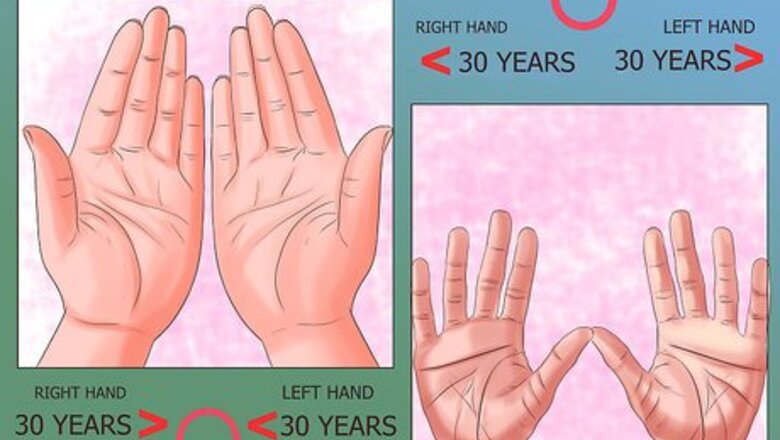
views
X
Research source
Most palmist scholars agree that there is no way to determine a person's age by reading the palms. However, there are many lines across the palms, and it is believed that the lengths and intersections of these various lines can be used to "read" the general blueprint of a person's life.[2]
X
Research source
Learning how to identify the primary lines used in palmistry can help you read hands, and may help you calculate a person's age or vitality in life.
Identifying the Palm Lines
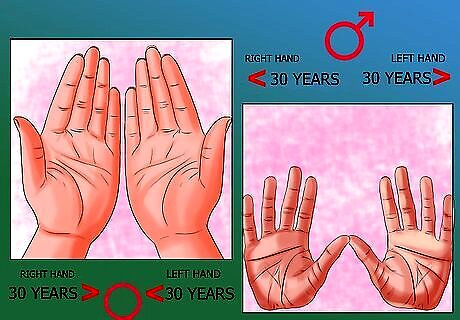
Choose the correct hand. Often times, a palm reader will rely on both hands to give a more accurate reading. However, some palmists prefer to use one primary hand, and which hand is chosen will depend on both the age and gender of the person being read. Men who are under the age of 30 should offer the left palm as the primary hand. Men over 30 years of age should use the right palm as the primary hand. Women who are under the age of 30 should offer the right palm as the primary hand. Women over 30 years of age should use the left palm as the primary hand.
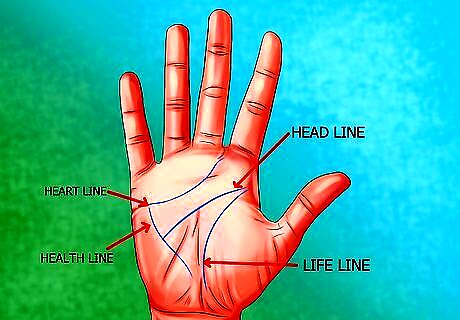
Study the most common lines. Much like fingerprints, everyone's palm will be slightly different. However, there are certain basic contours that are consistent across almost every palm. Before you can read a palm, it's imperative that you be able to recognize the various palm lines on the primary hand. Knowing where the life line is in relation to the other nearest lines may make it easier to find. The heart line is the easiest to identify. It is located at the top of the palm, and it typically extends almost all the way across the palm, parallel to where the fingers meet the rest of the hand. The head line is located below the heart line, more or less parallel to it. It runs horizontally from between the thumb and index finger straight across the palm. The life line is the next prominent line on the hand. It is typically curved but may run vertically or at an angle, and may intersect the head line and/or the heart line. To find it, look for the semi-curved line that starts between the thumb and index finger and runs down toward the wrist.
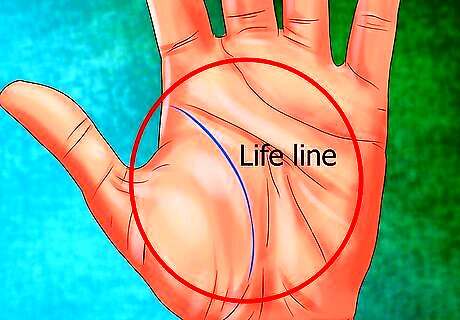
Understand the life line. The life line primarily indicates health, significant life changes, and the general well-being of a person. Contrary to popular belief, there is no real consensus on the correlation between the life line and a person's longevity. However, there is some consensus within palmistry studies that a person's vitality and quality of life can be determined by the life line.
Reading the Life Line
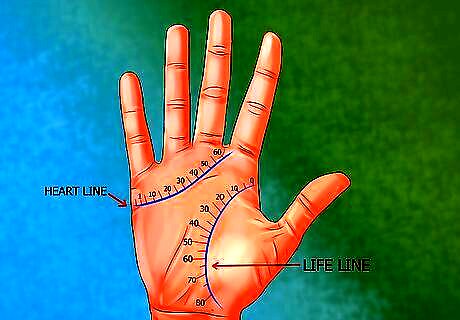
Calculate a person's age. There is some disagreement among palmistry scholars on whether or not the life line indicates a person's longevity. Many scholars in the field do not believe that the age or longevity can be read from the palm.However, those who do believe such a reading is possible look to the ratio of the life line to the heart line in order to conduct this reading. If the life line (LL) to heart line (HL) ratio is: 0.36 - this LL/HL ratio indicates a lifespan of 64 years years 0.37 - this LL/HL ratio suggests a lifespan of 68 years 0.35 - this LL/HL ratio means a lifespan of 71 years 0.39 - this ratio suggests a lifespan of 74 years 0.34 - this ratio indicates a lifespan of 76 years 0.38 - this ratio also means a lifespan of 76 years 0.37 - this ratio indicates a lifespan of 79 years 0.41 - this ratio suggests a lifespan of 80 years 0.36 - this ratio indicates a lifespan of 81 years

Read the depth of the life line. A deep, unbroken life line indicates a strong vitality and a passion for life. By contrast, a shallow line indicates that the person may be easily misled or manipulated.
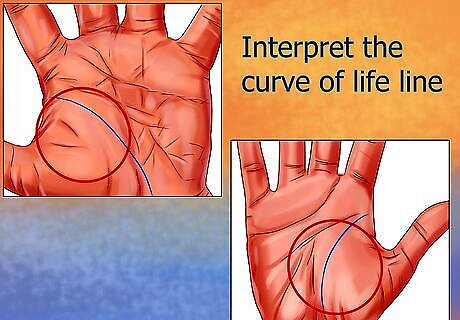
Interpret the curve of the life line. The life line's curve is typically thought to be an indication of adventurousness. A line that curves close to the thumb is thought to indicate that the person does not stray far from home. A line that sweeps outward is indicative of a love of travel and adventure.

















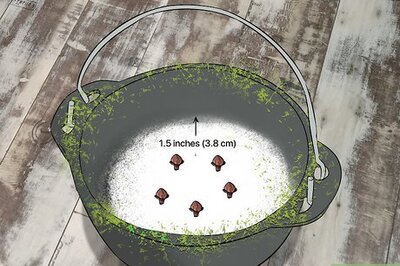
Comments
0 comment